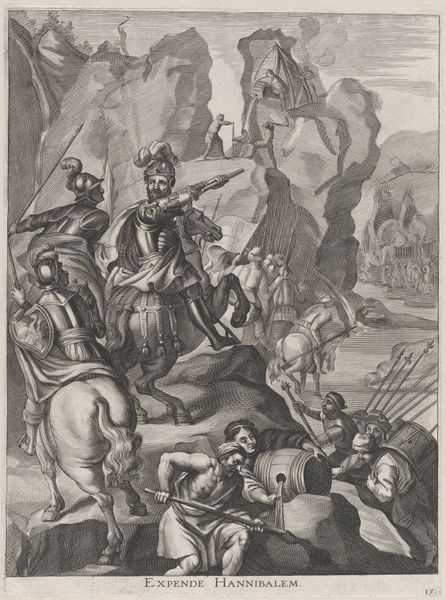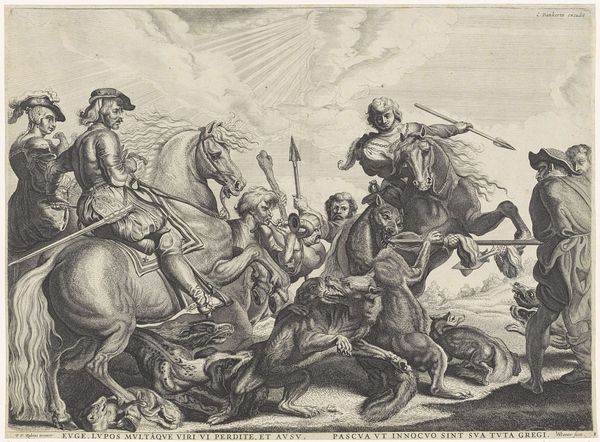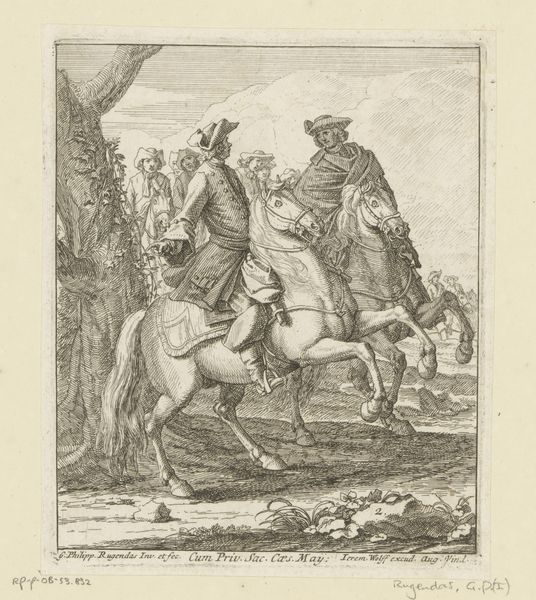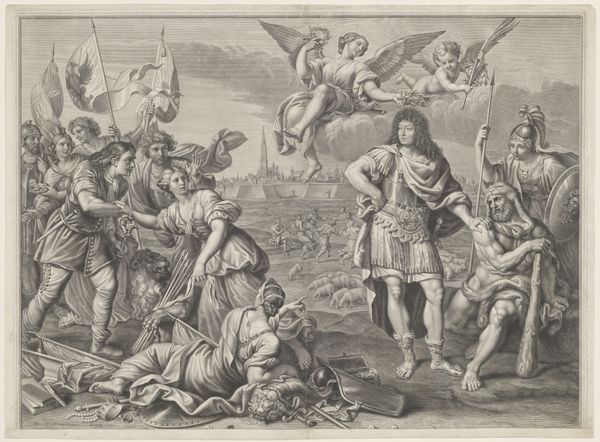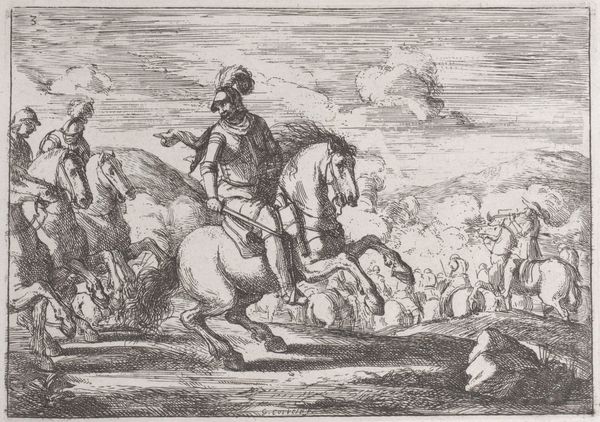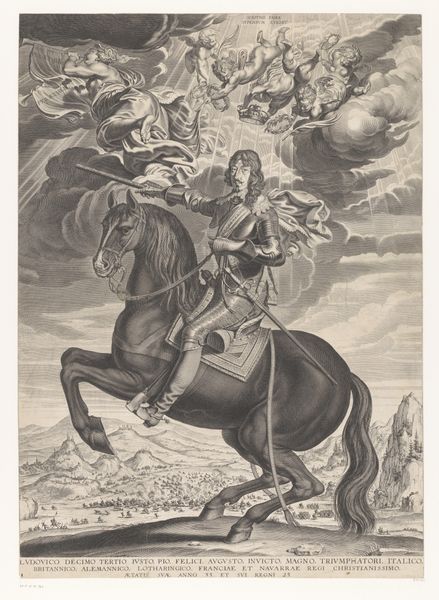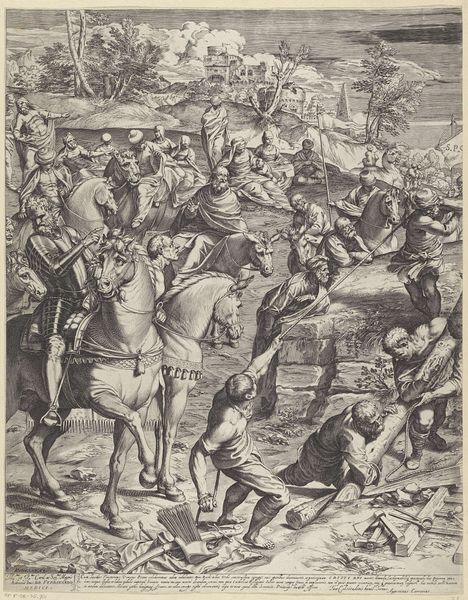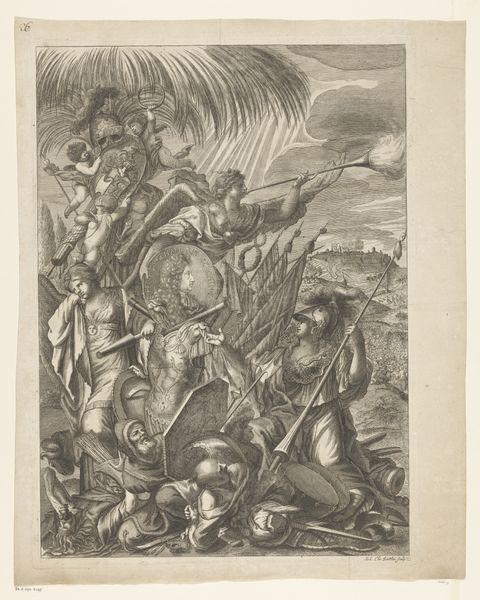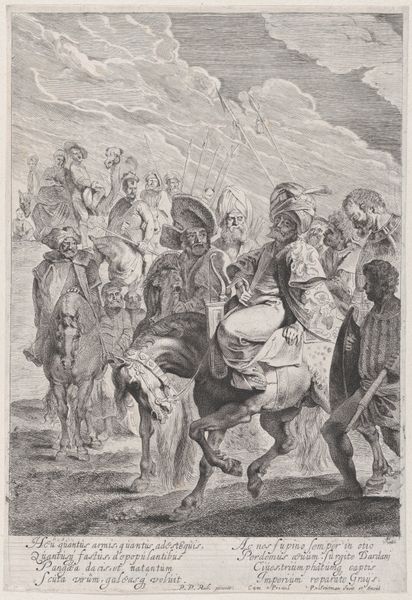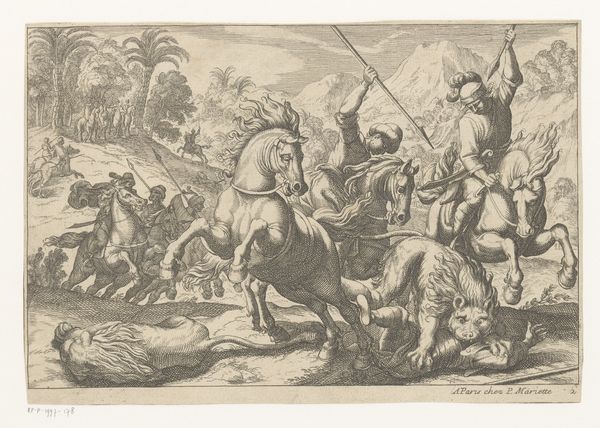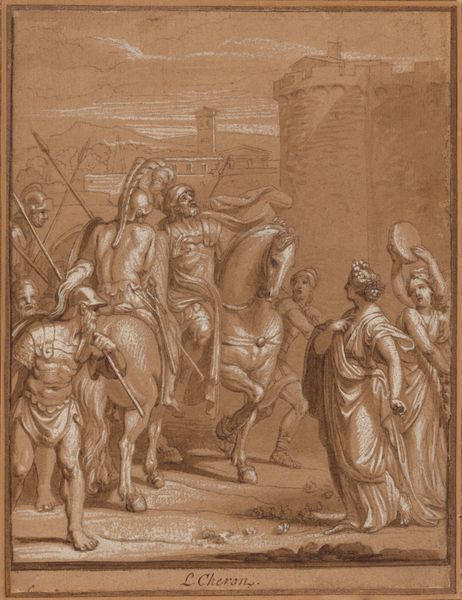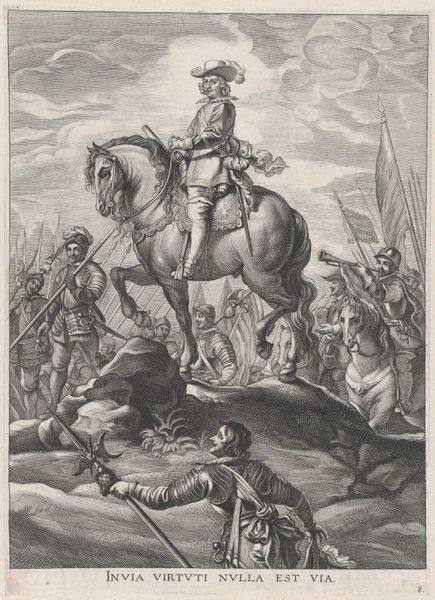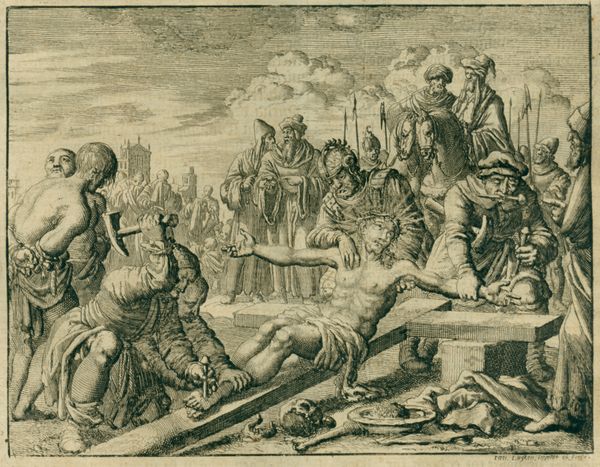
Plate 22: Emperor Charles V, victory at Pavia; from Guillielmus Becanus's 'Serenissimi Principis Ferdinandi, Hispaniarum Infantis...' 1636
0:00
0:00
drawing, print, engraving
#
portrait
#
drawing
#
baroque
# print
#
soldier
#
horse
#
men
#
history-painting
#
engraving
#
sword
Dimensions: Sheet (Trimmed): 14 5/8 × 10 1/2 in. (37.2 × 26.6 cm)
Copyright: Public Domain
Curator: Look at this striking engraving. Jacob Neeffs created "Plate 22: Emperor Charles V, victory at Pavia" in 1636. It’s part of a larger series, a printed celebration of Ferdinand, a Spanish prince. Editor: My first thought is, what a potent image! The horses are so imposing, and Charles V practically radiates power in his full armor. The scene feels like pure baroque theatre, projecting strength and unwavering dominance. Curator: Precisely. Neeffs employs established symbols. The equestrian portrait speaks volumes, linking Charles V to classical traditions of leadership. It’s visual rhetoric, isn’t it? These images circulated widely. What ideas and messages did this piece attempt to communicate across time and history? Editor: Without a doubt. Victory, legitimized power, imperial destiny. I wonder how it would have resonated with the ordinary people of the time. Was this really a symbol of triumph or did it also imply heavy political control over them? How did those who were impacted view this glorified figure? The image almost romanticizes imperial military domination and does not show other elements impacted during the battles. Curator: You raise a critical point. This victory, seen through a Baroque lens, translates to divinely sanctioned rule. The figures floating above, offering crowns, underscore the ideological implications. There is certainly a lot of manipulation within this image in which there are certain cultural narratives perpetuated, whether this manipulation was intentional or a product of this historical period. Editor: I agree. And if we think about it, art then becomes less a direct reflection of reality and more of an effective medium that perpetuates certain social relations, even when we reflect on art today. Who are the Emperors and Empresses that exist today, what images are projected about them? Perhaps there has been some semblance of change to these images and symbolism but many power dynamics unfortunately remain. Curator: Definitely, recognizing visual motifs lets us decipher the language of power encoded in these works and even their continuing effects. Editor: Examining art with an eye toward symbolism opens an understanding into power dynamics. Thank you! Curator: Absolutely. Understanding this complex interplay provides insights.
Comments
No comments
Be the first to comment and join the conversation on the ultimate creative platform.
